The Invasive Species Council has called on the Australian Government to swing into immediate action to prepare for the fight against a killer bird flu turning up in Australia’s wild birds, following the announcement of the discovery of a bird flu strain on an egg farm in Victoria.
‘While tests have now confirmed the disease found on a Victorian egg farm is fortunately not the highly pathogenic H5N1 variety of bird flu, this should be a wake up call for the Australian Government,’ said Jack Gough, Advocacy Director for the Invasive Species Council.
‘Australia is now the only continent where this deadly bird flu has not turned up and scientists say that it is only a matter of time before the disease arrives in Australia.
‘If highly pathogenic bird flu turns up in Australia it will have catastrophic impacts on our native birds, and may lead to local extinctions of species like black swans.
‘The potential for environmental damage in Australia is catastrophic but, while our poultry industry has a detailed response plan, Australia does not yet have an equivalent plan for wild birds and at-risk mammals like sea lions.
‘It is critical that the Australian government immediately ramps up surveillance in wild bird populations. Without this, the disease could get in and we won’t know until it’s spreading out of control and we start to see mass deaths among native birds on islands or on beaches.
‘In Antarctica, researchers are already observing mass mortality events never seen before on the continent. Thousands of Adelié penguins and Skuas are dying, with some scientists suggesting this may lead to a complete loss of local populations.
‘This strain of bird flu has also killed polar and grizzly bears, and infected bottlenose dolphins, lions and skunks.
‘The establishment of a dedicated national wildlife taskforce would ensure coordination among state and federal biosecurity and environmental agencies, and key non-government response partners like zoos, aviaries, wildlife carers and wildlife disease experts.
‘Funding should also be ready for immediate use to limit the spread and respond to the impacts when the disease reaches our shores.
‘Response tasks will include the removal and disposing of dead birds, rescuing impacted wildlife and funding for local responses. This will probably include euthanizing some infected populations to stop the spread.’
‘Last year this bird flu killed over 60,000 seabirds and 3,500 sea lions within weeks of reaching Peru and 70% of elephant seal pups born in Peru in 2023 have died. In the UK it has wiped out about 30% of the country’s breeding population of roseate terns, great skua and gannets,‘ Mr Gough said.
Background notes
- The Invasive Species Council has developed a comprehensive set of recommendations to the Australian Government to prepare for the arrival of high pathogenicity avian influenza or H5N1 in wildlife populations. Recommendations include:
- Establishment of a national taskforce
- Development of a national wildlife response plan
- Increased surveillance in wild bird populations, including collaboration with indigenous rangers, birdwatchers, land managers and researchers, particularly in remote locations.
- Provision of resources to assist in the preparation of local response plans for managers of sites with high concentrations of shorebirds, waterbirds or seabirds.
- Wildlife Health Australia has undertaken a risk assessment for the Australian Government for H1N1 which finds that the risk of “HPAI virus exposure and establishment in resident wild birds” is “moderate/high” and that the impact of this will be “catastrophic”. Some key findings from this assessment include:
- Extrapolating from global outbreaks of HPAI H5N1 clade 2.3.4.4b, there are likely to be significant consequences associated with incursion and establishment of HPAI in Australia via wild birds given a moderate likelihood of incursions.
- The frequency of HPAI incursions into Australia via wild birds may be significantly lower compared with other continents and as a result, containment of outbreaks may be more achievable in the Australian context if they are identified early.
- Consequences to wild birds are assessed as CATASTROPHIC with moderate uncertainty, consequences to poultry are assessed as HIGH with moderate uncertainty and consequences to wild mammals are assessed as MINOR with moderate uncertainty.
- In multiple outbreaks the scale of mortality has been extremely high, often involving deaths of 100s, 1,000s or 10,000s of individuals with significant proportions of birds, resulting in mortality globally estimated to be in the millions.
- The Australian black swan has recently been determined to be highly susceptible.
- From Oct 2021-April 2023, over 335 species of wild birds have been impacted in 8403 reported wild bird outbreaks globally.
- Since 2020, there have been outbreaks in Asia, Europe, the Middle East, Africa, North America, South America and Antarctica – Australia remains the only continent free of high pathogenicity avian influenza (HPAI).
- Humans and other mammals can become infected through contact with live or dead infected animals, or contaminated environments. Current strains of avian influenza do not appear to transmit between humans.
- The public should report any unusual bird deaths immediately by calling the Emergency Animal Disease Hotline on 1800 675 888.






